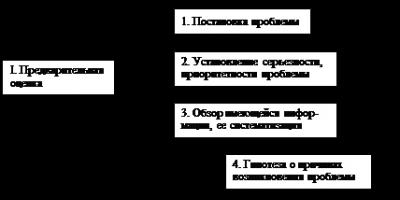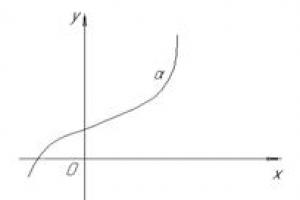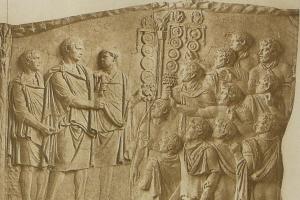According to their syntactic function, i.e., depending on whether they formalize coordinating or subordinating relationships, conjunctions are either coordinating or subordinating.
Essays conjunctions serve to connect syntactically equal units (homogeneous members of a sentence, parts of a complex sentence).
By value, i.e. According to the nature of the relationships they express, coordinating conjunctions are divided into:
1) connecting, expressing the enumeration relation: and, yes(in meaning And), and... and, neither... nor, too, also: The farm was spread out far to the side, and near the pier there was such silence as happens in deserted places only in the dead of autumn and at the very beginning of spring;
2) adversative, expressing relations of opposition, inconsistency, difference: a, but, yes, however, same, but, otherwise: Birches are all more were burning, but they too crumbled, quietly dropping the last leaves in their sleep, of which there were many lying around each birch;
3) dividing, expressing relations of mutual exclusion, alternation of actions, phenomena, signs: or, or, whether... or, then... then, or... or, not that... not that: In the evenings Taras Semenovich either read aloud some book or told fairy tales;
4) explanatory, expressing explanatory relations: exactly, namely, that is, or(in meaning that is)like that and etc.: Recognizing oneself is usually a slow process, sometimes stretching over decades, connected and even to a certain extent conditioned by recognition of others, that is, life experience that does not come soon;
5) connecting, expressing relations of addition, i.e., serving to attach words, phrases and sentences containing additional remarks not provided for in the original plan of the statement: yes and, also, and also, too etc. (other coordinating conjunctions are also used in the connecting meaning): Over tea, my uncle ordered me to sort out my warehouse in the hay, and also go to the janitor so that she could clean the dishes, wash the floor and put the apartment in order..
Subordinates conjunctions serve to connect syntactically unequal units (the main and subordinate parts of a complex sentence, less often - members of a simple sentence) and to express certain semantic relationships between them.
According to semantic criteria, subordinating conjunctions are divided into:
1) temporary: when, as soon as, as soon as, barely, barely, just, only, before, since then, until, until, after and etc.: They had barely set sail when water began to flow like a fountain from the rotten bottom in different places.;
2) explanatory: what, in order, how: The forest was still packed with people, and no matter how many of them were sent under command in different directions, it seemed that they would never disperse;
3) causal: since, because, because, due to the fact that, due to the fact that, in view of the fact that, because, in connection with the fact that, due to the fact that and etc.: I mumbled something and quickly disappeared, because Vaska’s case was partly my fault.;
4) consequences: so: Two arshins of snow fell, so the horse drowned in it;
5) comparative: as, as if, as if, exactly, just like and etc.: A moment later we were racing as fast as if the car had a jet engine installed.;
6) concessionary: although, let it be, let it be, despite the fact that and etc.: No, he was not thinking now about being with his division there, in the very center of the earthquake shaking the plains of southern Russia, but, although his mind was intractable to such thoughts, his heart felt the solemn and terrible tremors coming from there;
7) conditional: if, if, if, if only, once and etc.: If you love, you are crazy, if you threaten, you are serious, if you argue, then you are bold.;
8) targeted: so that, in order to, then in order to and etc.: Sasha pinned an agricultural exhibition badge on his jacket so that everyone could see that he had visited Moscow.
Particles
The class of particles combines unchangeable non-nominal (functional) words, which, firstly, participate in the formation of morphological forms of words and sentence forms with different meanings of unreality (motivation, convention); secondly, they express a wide variety of subjective-modal characteristics and assessments of the message or its individual parts; thirdly, they participate in expressing the purpose of the message (interrogativeness), as well as in expressing affirmation or negation; fourthly, they characterize an action or state by its course over time, by the completeness or incompleteness, effectiveness or ineffectiveness of its implementation. The listed functions of particles are grouped, on the one hand, into functions of shape formation, and on the other hand, into functions of various communicative characteristics of a message. What all these functions have in common is that in all cases they contain the meaning of a relationship: either the relationship (relatedness) of an action, a state, or a whole message to reality, or the relationship of the speaker to the communicated, and both of these types of relationships are very often combined in the meaning of one particle . The meaning of a particle as a separate word is the relationship that it expresses in a sentence.
A characteristic feature of many particles is that in their structure and functions they are close to adverbs, conjunctions or interjections and cannot always be strictly opposed to them; in many cases the particles also come close to the parent words.
All parts of speech are usually divided into independent and auxiliary. The first ones are the most important.
They represent the basis of linguistic diversity. The latter perform an auxiliary function. This includes unions. In Russian, they serve as connectives. There are also special rules for their use. In addition, such parts of speech can be divided into types. What are conjunctions in Russian? You will find the answer to this question below.
What are unions?
In the Russian language, this part of speech is intended to connect as well as parts and at the same time express the semantic relationships between them.

Unlike related prepositions, conjunctions are not assigned to any case. All of them are classified on different grounds. Thus, according to their structure, unions are divided into two types: simple and compound. The first ones consist of one word (or, too), while the second ones consist of several words since).
Main classification
There is one more reason on which conjunctions in the Russian language are divided into types. The table fully reveals the essence of this classification.
Types of unions depending on the functions performed |
|||
Essays (serve to connect both homogeneous members and parts of complex sentences) | Subordinates (connect the main and subordinate parts in a complex sentence) |
||
Connecting | And, yes, too, no, no, also | Explanatory | So that, how... |
Causal | Because, because... |
||
Nasty | Yes, but, well, but, however | So that, then so that... |
|
Temporary | When, barely... |
||
Conditional | If, when... |
||
Separating | Or, either, this, this, this, this, this or that | Concessive | Although, let... |
Comparative | As if... |
||
In addition, all conjunctions can be divided into non-derivative (and, as) and derivatives, that is, formed from other parts of speech (despite).
Punctuation points
There are special rules according to which it is determined whether any punctuation mark needs to be applied or not. As a rule, we are most often talking about a comma. It is always placed before the conjunction, but never after.

It should be noted that, despite the similarity of some parts of speech, the same rules cannot be applied to them. Thus, the conjunctions and prepositions that pepper the Russian language, although they have much in common, are still characterized differently. Let's return to the rules established directly for the part of speech that interests us. So, a comma before conjunctions is needed if they are adversative (“She didn’t get angry, but even screamed”), paired (“It will either snow or rain”) or subordinate (“I will come if you you will call"). In addition, this punctuation mark is needed if it separates parts of a complex sentence (“Spring has come and the starlings have arrived”). If the conjunction connects homogeneous members, then a comma is not required (“Green and blue balls rushed into the sky”). These are the general rules for using this part of speech in writing. If, when writing, there is a comma before the conjunction, then a pause should be made at this point in the speech.
Union - this is a service part of speech that serves to connect homogeneous members of a sentence, parts of a complex sentence, as well as individual sentences in the text.
Unions do not change and are not members of the sentence.
By structure, unions are divided into:
1) simple (written without spaces):ah, because ;
2) composite (written with one or more spaces):since, while.
The types of compound conjunctions are
1) double (two-component) conjunctions, the parts of which are located distantly with an obligatory (not so much...as, not only...but And ) or optional (if...then, once...then, barely...how ) the second part,
2) repetitive , that is, such compound doubles that consist of identical parts (neither...nor, then...that, or...or ).
By the nature of the syntactic relations expressed by them,unions are divided intoessay Andsubordinates .
Coordinating Conjunctions connect equal components. They connect homogeneous members of a sentence, parts of a complex sentence, sentences in the text.
Coordinating Conjunctions have the following ranks of meaning:
1) connecting (meaning ‘both this and that’):and, yes (in meaning 'And' ), neither...nor, as...so and, and...and, not only...but also, as...so and, too, also ;
2) dividing (meaning ‘either this or that’):or, either, then...that, not that...not that, or...or, either...or;
3) adversative (meaning ‘not this, but that’):ah, but, yes (in meaning 'But ’), however, but .
Subordinating conjunctions uniteunequalcomponents and indicate the dependence of one of these components on another. They mainly connect parts of a complex sentence, but can also be used in a simple sentence to connect homogeneous and heterogeneous members.
For example:subordinating conjunction ALTHOUGH connects homogeneous members of a sentence:The book is interesting, Although a little drawn out .
Unions AS, AS IF, AS IF, THAN connect homogeneous and heterogeneous members of a sentence:In winter the night is longer, how day . Pond as if mirror.
The following categories of subordinating conjunctions are distinguished by meaning:
1) temporary:when, while, barely, only ;
2) causal: since, because; for (outdated / bookish);
3) conditional: if, if only (obsolete),if (obsolete);
4) target:so that, in order to, in order to (obsolete);
5) concessional:although, despite the fact that ;
6) consequences: So ;
7) comparative: as, as if, as if, exactly, than ;
8) explanatory:what, how, to .
These lists can be supplemented with compound subordinating conjunctions, for example:while, as if, only, in connection with the fact that, for the purpose of and etc.
Some conjunctions are ambiguous and can be classified into several categories, for exampleto (target and explanatory),When (temporary and conditional).
Morphological analysis of the union
The union is dismantled according to the following plan:
I.Part of speech. Grammatical role (what it is used for).
II.Morphological features: a) coordinating or subordinating; b) simple or compound.
Sample morphological analysis of the union:
We all jumped up from our chairs, but again there was a surprise: the noise of many steps was heard, which meant that the hostess had not returned alone, and this was indeed strange, since she herself had appointed this hour (F. M. Dostoevsky).
I.But - union
II.Coordinative, adversative, simple, connects parts of a complex sentence.
I.What-union
II.Subordinating, explanatory, simple, unchangeable, connects parts of a complex sentence.
I.A - union
II.Coordinative, adversative, simple, unchangeable, connects parts of a complex sentence.
I.Because it's a union
II.Subordinating, reasons, compound, connects parts of a complex sentence.
We continue to explore the levels of the language system, based on . This lesson will focus on the morphology and spelling of conjunctions. The topic is big, but the holidays are coming, you can consider this a vacation task!
Lesson 17. Union. Morphology (grammatical meaning) and comments. Coordinating, subordinating and connecting syntactic connections. Spelling separately coordinating conjunctions that is, I mean and a bunch of unions too, also, but how much... so much , connecting unions and, moreover, why . Spelling subordinating conjunctions so that, so that, because, because and an introductory word So , acting as a union. Learning to create statements
I. A conjunction is an auxiliary part of speech that is used to connect independent parts of speech in a sentence and the sentences themselves, for example: On the big tree What grew up opposite my house, crows and magpies settled down.
Morphological analysis of the union.
- The syntactic function of conjunctions is the role of fastening elements of both sentence members and sentences. According to their syntactic function, conjunctions are divided into coordinating, subordinating, and connecting.
- Grammatical meanings.
- Structural structure.
Comments on the morphological analysis
1. Coordinating, subordinating and connecting conjunctions get their name from the type of syntactic (grammatical) connection between the independent parts of speech in a sentence and the sentences themselves - coordinating (composition), subordinating (subordination) and connecting (attachment).
Essay A syntactic connection establishes equal relations between independent parts of speech, which in a sentence become members of the sentence, and the sentences themselves. This is expressed in the fact that in a coordinating connection, one member of a sentence or sentence cannot pose a question to another member of a sentence or sentence, for example:
1) Masha And Petya went to school today.- Nouns Masha And Peter in this simple sentence they act in the syntactic role of subjects, and these subjects are connected to each other by a coordinating connection as homogeneous members of the sentence.
2) Masha went to school today, And Petya went after her.- In this complex sentence, two equal simple sentences are connected using a coordinating connection, which is why the entire sentence is called a complex sentence.
The binding element of sentence members and clause-parts in a complex sentence is the coordinating conjunction And.
Subordinating A syntactic connection establishes relations of subordination and dependence between independent parts of speech - members of a sentence and the sentences themselves. This is expressed in the fact that with a subordinating connection from one member of a sentence or sentence, you can put a question to another member of the sentence (make up a phrase) or sentence, for example:
1) Little Masha played with dolls.- In this simple sentence, a noun is connected by a subordinating connection Masha(subject) and adjective small(definition), verb played(predicate) and noun with preposition into dolls(addition).
Exercise. Connect all the indicated parts of speech - members of the sentence - with questions.
2) [Petya saw] How(little Masha played with dolls).- In this complex sentence, from one simple sentence (the main sentence, enclosed in square brackets), you can pose a question to another simple sentence (subordinate clause, enclosed in parentheses): Petya saw(What?), how little Masha played with dolls. From the subordinating connection, with the help of which the main and subordinate clauses are connected, the entire complex sentence received the name complex.
Subordinating conjunctions connect only simple sentences as part of a complex sentence (in this case, the conjunction How), members of the sentence are not connected by subordinating conjunctions.
Connection a syntactic connection is used in a statement divided into two parts. The attached second part acts as a clarification, explanation, additional judgment, development of the thought of the first part. In this case, the logical emphasis falls on the second, attached part. Both sentence and sentence members can join, for example:
1) In his free time, Ivan sang, And Amazing.- A circumstance expressed by an adverb is added to a simple sentence using a conjunction And.
2) In his free time, Ivan sang, besides he did it wonderfully.- In a complex sentence, the second simple sentence is joined to the first using a conjunction besides.
2. Essays
- connecting - and, yes (in meaning And), too, also, and also, neither... nor etc. Masha and Petya went to school today.
- separating - or, either, then... then, not that... not that, either... or etc. I don’t understand if it’s raining or snowing outside.
- adversative - ah, but, yes (in meaning But),but, however, although, how etc. This not rain, but snow.
- comparative - so... as, if not... then, as much... as, not only... but And etc. I know mathematics as well as I am capable.
- explanatory - or, that is, I mean etc. Sasha is an extraordinary, that is, simply wonderful, person.
Exercise. Look at the examples again and determine which words - parts of speech in each sentence are connected by conjunctions. Observe how, with the help of conjunctions, the concepts contained in these words are connected, separated, contrasted, compared and explained.
Subordinates Based on the grammatical meanings they convey, conjunctions are divided into:
- definitive - which, which, whose, where, where, from where … [A man (who?) entered the door, whom I saw from the window.
- explanatory - what, so, as if, how, as if not, whether … [Look] (what?) if anyone has come.
- temporary - when, while, while, while … While dawn was breaking (when?, what time?), [the ships had already left the harbor].
- causal - because, because, due to the fact that, in view of the fact that, due to the fact that, since … [I write poetry] (why?, for what reason?) because I can’t do otherwise.
- consequences - So (subordinate clauses of the effect, connected by this conjunction, denote the consequence of the cause contained in the main sentence). [He dressed warmly], so he was not afraid of the cold. (He is not afraid of frost, due to the fact that he dressed warmly).
- target - so that, in order to, in order to, if only, in order to … [Marina tried to behave well](for what?, with what forehead?) so that she would not be punished.
- comparative - as if, as if, as if … [The snow fell so quietly](How?) , as if nature froze for a while.
- conditional - if, how, if, whether... whether, once... then, if... then etc. If you go out in the cold without a hat(under what condition?) , [you can get sick].
- concessionary - although, despite the fact that, let (let) … Even though it's raining(although what?, despite what?) , [I’ll still go for a walk].
Exercise. Determine where in a simple sentence a derivative preposition is used and where in a complex sentence a conjunction is used.
1) Due to the fact that the author did not finish the story, it was not accepted by the publishing house.
2) Due to heavy rains, the potato harvest was in jeopardy.
Connection unions - and, yes and, moreover, besides, then, why … He studied well, in all subjects.
3. As can be seen from the examples, unions according to their structure are divided into:
1) single ( and, yes, too, to etc.)
2) repeating ( and... and, then... then, or... etc.
3) double ( so... as, not only... but also, as much... as etc.).
IMPORTANT! Conjunctions, like prepositions, can be complex and consist of several parts ( that is, not only... but also, despite the fact that etc.), but represent one word.
additional information
1. In addition to conjunctions, in a complex sentence, allied words are used as a link between the main and subordinate parts: pronouns what, which, which, adverbs how, when, where, where. They differ from conjunctions in their syntactic function: conjunction words are independent parts of speech and act as members of a subordinate clause; they can be replaced by independent parts of speech; conjunctions serve only to connect the main and subordinate parts and are not members of the sentence. Compare:
1) [I know], ( What soon will). - A conjunction word, pronoun, subject can be replaced with a noun in the nominative case: I know, winter coming soon. Please note that the logical stress falls on the conjunctive word.
2) [I know], What(soon will winter). - Subordinating conjunction. In the subordinate part it is impossible to pose a question from any member of the sentence. Found in a sentence in an unstressed position.
2. It is usually easy to draw the line between coordinating and subordinating conjunctions, but there is also homonymy between coordinating and subordinating conjunctions, for example the conjunction How. Compare:
1) [Student doesn't know](what?) , How(to solve this problem).- Union How is in a subordinate clause and belongs to subordinating clauses.
2) Brother works at a factory How engineer.- Union How connects the predicate works and the adverbial engineer in a simple sentence and belongs to the coordinating sentences.
3. The same conjunction can be used with different meanings, which determines the placement of punctuation marks in a sentence. For example, a coordinating conjunction or can have a dividing value, for example: Masha wants to learn to write or read, and explanatory, for example: There's a hippopotamus in front of you, or hippopotamus(a hippopotamus is also a hippopotamus).
II. Some coordinating and connecting conjunctions are auditorily indistinguishable from combinations of adverbs and pronouns with prepositions and particles. The main thing when figuring out the part of speech in a sentence is to remember that: a) a question cannot be raised with a conjunction as an auxiliary part of speech, b) an independent part of speech can only be replaced with a synonymous or similar independent one, and an auxiliary part with an auxiliary one.
1. Are written apart synonymous coordinating explanatory conjunctions that is, I mean , For example: We drank as usual, that is, a lot.(A. Pushkin)
Exercise. Union then bi it is considered obsolete. Saying the phrase today The day before yesterday, that is, the day before yesterday, my friend and I were at an exhibition of paintings, what nuance will we give it?
2. Are written seamlessly 1) connecting unions too, also 2) nasty but 3) comparative as much... as much 4) connecting and, moreover, why .
Connecting unions Same And Also are synonymous with each other, and both are synonymous with the union And, For example: I too (I also, and I) want to study at this school.
Conjunctions, too, also need to be distinguished from pronouns and adverbs with particles.
Demonstrative pronoun combinations That with a particle same and adverbs So with a particle same contain comparison-correlation: pronouns with an object (the same person, phenomenon), adverbs - with a sign of action. The similar object and action feature being compared are contained in the context or are logically deduced from it. In this case, the particle can be omitted altogether. For example:
1) I got a D in math. The same thing happened in Russian(the same event repeated).
2) Last year the weather was good all summer. It was the same this year(same this year; same as last year).
Often with a demonstrative pronoun That with a particle same there is a pronoun What, and with an adverb So with a particle same- adverb How. For example:
1) I read the same thing as my friend(read the same thing as my friend; read the book as my friend).
2) Children will spend this summer the same as the previous one.(same as the previous one; good, like the previous one).
Exercise. Try to explain why the expression in the same time it is written only this way and no other way. Give an example sentence with this expression.
A nasty union but synonymous in meaning to the adversative conjunction But and establishes oppositional relations between sentence members and sentences, for example: It was getting cool, but (but) not so damp.
This conjunction must be distinguished from the preposition behind with demonstrative pronoun That. When using a preposition with a pronoun, you should remember that the demonstrative pronoun then in this case determines the noun that follows it, for example: The girl hid behind that tree(behind the neighboring one, behind a large tree).
Exercise. Opposing alliances But And but are not always synonymous. Based on the shades of meaning, choose which conjunction you will put instead of the ellipsis in the sentence We came to visit...no one was home. What other adversative conjunctions are suitable in this case?
Double comparative conjunction how... so much synonymous with repeating conjunction How... and, for example: Sasha is as truthful as he is friendly(both truthful and friendly).
This conjunction must be distinguished from pronouns with the preposition how many, how many, which appear in the meaning of counting, for example: How much weight did Alyosha gain in camp, how much weight did he lose at home from illness?(gained five kilograms, lost five kilograms).
Affiliation unions and, moreover, why, are used in connecting constructions in simple and complex sentences, for example (pay attention to the synonyms given in brackets):
1) The speaker’s speech was interesting, and (including) to everyone present.
2) The sun was high, and (moreover, but) the heat had subsided a little.
3) Sasha walked around in the cold without a hat, which is why he got sick.
It is necessary to distinguish combinations of prepositions with pronouns from conjunctions with what, besides, for that, from what, which are never used in connecting structures.
Combination what does it have to do with used in interrogative sentences: What do you have to do with it? and also in the answer to this question: I have nothing to do with it.
Exercise. Explain the spelling of the particle in this expression.
Combinations with demonstrative pronouns besides, after that are defined by the following nouns:
1) There is a medical center at that plant.(and not at the same time; at a large plant)
2) Behind that building there is a vacant lot.(and not behind another; behind a new building) (Compare adverb: I'll eat, then (then) sleep.)
Combination from what in interrogative sentences it always indicates a noun with the preposition from, for example: What is this detail from? From the radio. This combination must be distinguished from a causal union from what , synonymous with the union Why, For example: From what(why, for what reason) Mainly cloudy? The sun has disappeared(because the sun disappeared).
III. Synonymous subordinating conjunctions are written together so that, so that attaching a subordinate clause to the main clause in a complex sentence, for example: I came to the library to (to) borrow an interesting book.
These conjunctions should be distinguished from the pronoun What with particles would or b. Pronoun What can be replaced by a noun with an interrogative pronoun Which, particle would rearrange to another place in the sentence (particle b omit altogether), for example:
2) No matter what you may have heard about the beauty of Seliger, it is better to visit these places yourself. (Whatever words you hear...)
Exercise. Explain based on the significant parts included in the adverbial expression through thick and thin, used in a simple sentence, why is it written only this way and not otherwise. Explore the offer Come to me at any cost. What adverb is this adverb expression synonymous with?
There are quite a lot of complex subordinating conjunctions, which, while representing one word, consist of several parts: because, because, thanks to the fact that, in view of the fact that, so that, if only, so that, as if, despite the fact that etc. All parts in such unions are written separately. For example:
1) In order to improve relationships, you must first make peace.
2) Mila has become so prettier, it’s as if a rose has blossomed.
3) Even though the weather has turned bad, the excursion will still take place.
(About punctuation marks in sentences with complex subordinating conjunctions in topics devoted to complex sentences.)
Exercise. In the examples above, connect the main and subordinate clauses with logical questions.
Unions because, because, which are used in subordinate clauses must be distinguished from pronouns with prepositions from that, according to that in the main clause and allied words What or How in the subordinate clause. Unions because, because:
a) causal, they establish the relationship of cause and effect between the main and subordinate clauses;
b) interchangeable;
c) can be divided into parts, leaving one part in the main clause, the other in the subordinate clause - the logical stress will fall on the part left in the main clause. For example:
1) Peter didn't come to school(why?, for what reason?) , because (because) I got sick.
2) Peter did not come to school because he was sick.
Pronouns with prepositions from that, according to that with allied words What And How are used in different parts of a complex sentence - pronouns with prepositions in the main part, and allied words in the subordinate clause. From a pronoun with a preposition to a subordinate clause a question is posed from what?, from what circumstances?, for what?, for what reasons?. In this case, the logical stress falls on both the pronoun in the main part and the allied word in the subordinate clause. For example:
1) The success of the election campaign depends on(from what?, from what circumstances?) what can be done at meetings with voters.
2) The end result can be seen by(by what signs?) How will you pass your exams?
Exercise. Read the sentence. Give reasoning confirming that the first highlighted words are a pronoun with a preposition and a conjunctive word, and the second are a complex subordinating conjunction. By his voice, because he inhaled the smell of forest water, looking around, I realized that Zuev did not want to rush not only because with extraordinary joy he feels himself in familiar places.(K. Paustovsky)
The introductory word acts as a conjunction So , meaning "therefore". It always stands at the beginning of a sentence and, by right of an introductory word, is separated by a comma, for example: So (therefore), the show begins. This introductory word must be distinguished from the combination of the conjunction And with an adverb So in a simple sentence where the adverb So can be replaced with an adverb. For example: The boy fell and hurt himself so (very) badly!
Sometimes in a complex sentence an adverb So acts as an indicative word in the main sentence, on which the logical stress falls, and the subordinate word is joined by conjunctions What or How, For example: The boy fell and hurt himself so badly(how painful?) that I had to see a doctor.
Exercise. Please indicate the correct spelling of the highlighted word and its explanation.
You have to be a person of great soul to love these inconspicuous, quiet rivers and copses so much...
1) to- always written together
2) to- always written separately
3) to- here it is a subordinating conjunction
4) to- here this is a pronoun with a particle would
Based on their syntactic properties, conjunctions are divided into coordinating and subordinating conjunctions.
Coordinating Conjunctions
Coordinating conjunctions connect homogeneous members of a simple sentence and parts of a complex sentence. The formal feature of the coordinating conjunction is that, located between the connected components, it is not included in the syntactic structure of any of them. Whereas the subordinating conjunction belongs to the subordinate part, together with which it can occupy different positions in relation to the main sentence: When the detachment entered the city, the sun was setting→The sun was setting when the detachment entered the city→ The sun was setting when the detachment entered the city.
Coordinating conjunctions connect components as functionally equal: when composing, neither the main nor the dependent part can be distinguished. At the same time, the homogeneity expressed by the coordinating conjunction is not the same. It can relate to the syntactic level - a conjunction connects identical parts of a sentence: I’ll get a cat and a parrot; can be lexical-semantic - a conjunction connects different forms with their common or same type of referent orientation: I talk to poets and about poets(V. 3. Sannikov); as well as communicative - a conjunction connects functionally different members of a sentence: It is raining, and heavily; She will return, but not soon - an adjective and an adverb attached to a sentence by a coordinating conjunction are also read as a sentence).
Coordinating conjunctions are divided into: 1) connecting, 2) dividing, 3) adversative, in which gradational ones are especially distinguished, 4) connecting and 5) explanatory.
Connecting unions and, neither... nor, yes(in meaning And), both... and... These conjunctions express a connection that is not complicated by additional meanings; they are often used to indicate enumeration: And my Matryona became neither a peahen nor a crow(Krylov); And the sling, and the arrow, and the crafty dagger spare the victor for years(Pushkin). The most abstract of the connecting conjunctions is the conjunction And, which, according to A. M. Peshkovsky, expresses the “pure idea of connection.” Union And is not only used to express enumeration and join. Based on adverbs, particles, modal words (and then, and therefore, and therefore, and means, and yet, and yet, and nevertheless), as well as the meaning of the combined parts, it can convey temporary, cause-and-effect, concessional, conditional, adversative and connecting meanings.
Dividing unions or, or, then... then, not that... not that, or... or, either... either, either... either, or else, and not that express two main syntactic relations:
1) mutual exclusion value: Either she - the telegram - got into a snowdrift and now lies deep under the snow, or she fell on the path and was dragged away by some passerby...(Gaidar),
2) priority value: Now it’s rain, now it’s hail, now it’s snow like white fluff, now it’s sun, shine, azure and waterfalls...(Bunin); The storm covers the sky with darkness, spinning whirlwinds of snow: the way it howls like an animal, the way it cries like a child(Pushkin).
Opposing alliances ah, but, however, yes(in meaning But) are polysemantic, the context can modify their content; the main meaning of the conjunction a is comparative: The snow is still white in the fields, and the waters are noisy in the spring(Tyutchev), unions but, however, yes - adversative: She comes up - and in tears she looks at the noisy waters. She hit her chest, sobbing, and decided to drown in the waves - However, she didn’t jump into the water and continued on her way.(Pushkin).
Gradational conjunctions (they are also called double comparative conjunctions) not only... but also, not only... but and, not only not... but, not as much... as, not even that and others express comparison or contrast according to the degree of significance: He is not only handsome, but also talented.
Affiliation unions yes and, yes and that, (and) moreover, (and) moreover, too, also express additional information to what has been said: There was a lot of water, and it was not spoiled.
Explanatory conjunctions namely, that is, or, somehow express clarification and clarification: We drank as usual, that is, a lot(Pushkin); Anna spent the whole day at home, that is, with the Oblonskys...(L. Tolstoy);
Pets, namely cats, have a calming effect on humans; It’s called that, that is, its nickname is Manilovka, but Zamanilovka is not here at all(Gogol).
Note. In some works, explanatory conjunctions are distinguished from coordinating conjunctions and are recognized as lexemes that form a special type of syntactic relations, intermediate between coordinating and subordinating relations.
Subordinating conjunctions
Subordinating conjunctions attach subordinate clauses to the main parts of a complex sentence. Some subordinating conjunctions are also used when constructing a simple sentence. Yes, union How can be placed before the nominal part of a compound predicate: The house is like a passage yard or enter into a circumstance of a course of action: Dreams disappeared like smoke(Lermontov), union to can attach a goal circumstance expressed by an infinitive: We gathered to discuss a plan of action. Wed: We gathered to discuss the action plan.
Subordinating conjunctions are usually divided into semantic and asemantic. The latter include conjunctions that attach subordinate clauses: what, how, to, as if. They are usually compared with grammatical cases, since with the help of explanatory conjunctions such syntactic places are often replaced, in which there may be a grammatical case (You can hear the sound of the wind, You can hear it as if the wind is rustling; I dream about spring. I dream about spring; I remembered what happened. I remembered what happened). Like grammatical cases, explanatory conjunctions express syntactic relations predetermined (given) by the semantics of the word (or word form) to which the subordinate clause refers. An explanatory conjunction does not form the syntactic meaning of a complex sentence, but only expresses it.
However, it would be wrong to think that in terms of content, explanatory conjunctions are empty words. Explanatory conjunctions differ from each other in their modal components of meaning. Union to expresses the desired modality (tell him to come) as if - uncertainty (I see someone standing) that And How associated with real modality.
Semantic subordinating conjunctions have their own meanings. They define syntactic relationships in the structure of a complex sentence.
Semantic conjunctions are divided into groups according to meaning:
1) temporary unions when, before, after, barely... as, as soon as, barely,
2) causal because, because, since, in view of the fact that, especially since, due to the fact that, due to the fact that, due to the fact that, due to the fact that, as a result of that;
3) conditional if, if... then, in case if, in case if, provided that, if and etc.;
4) concessional despite the fact that, although, despite the fact that, despite the fact that, with all that, no matter what;
5) consequences so, as a result of which;
6) goals so that, in order to, for the sake of, in order to, then in order to;
7) comparative: as, as if, as if, as if, in the same way, likewise, as if, as if;
8) comparative conjunctions, coinciding with subordinating conjunctions on a formal basis, but in meaning not opposed to coordinating conjunctions if... then, while, meanwhile, whereas, as, as, than... by that. For example, The fathers did not visit each other, she had not yet seen Alexei, while(= a) the young neighbors only talked about him(Pushkin).








